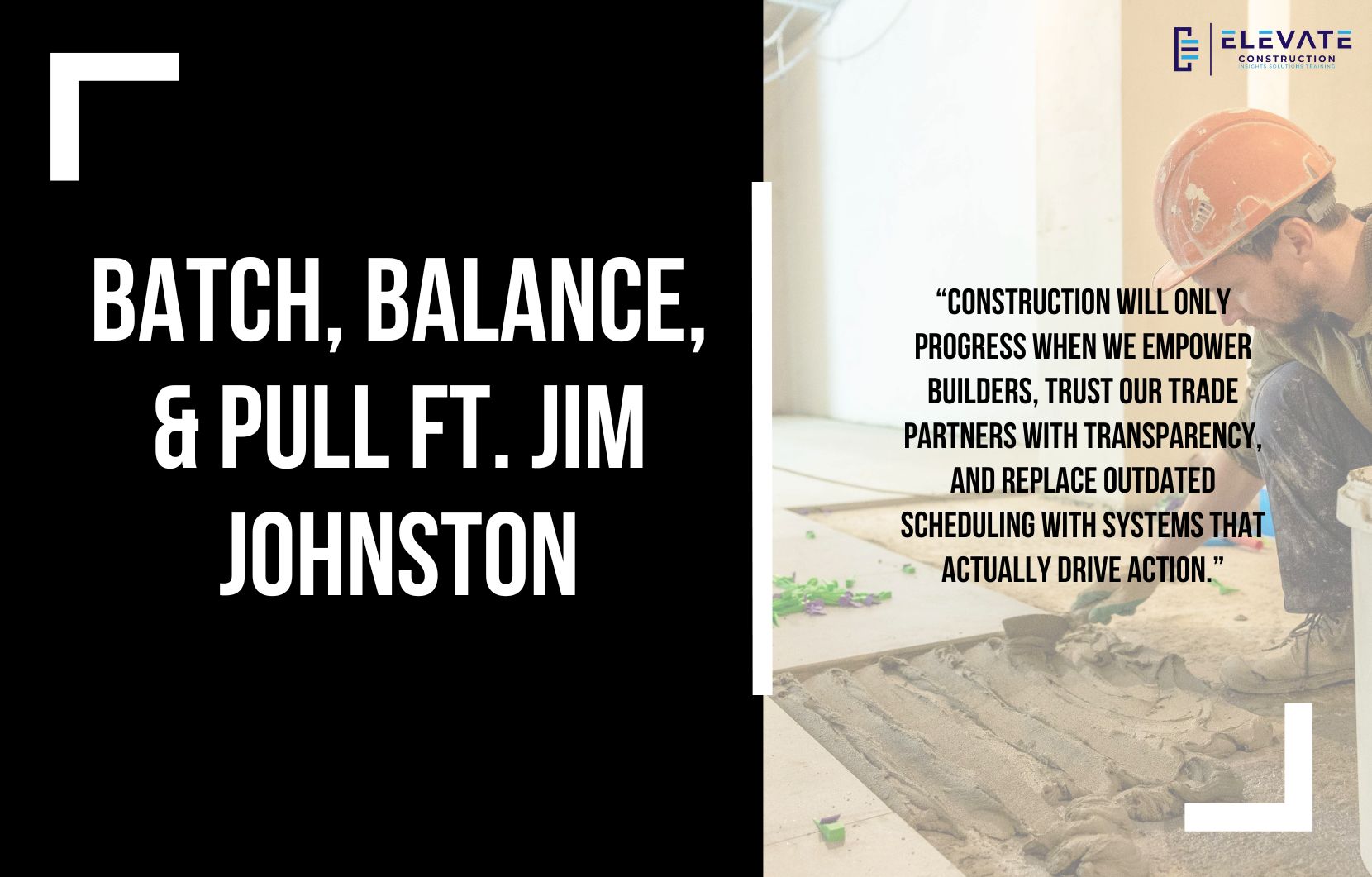The Rise of the Builders
Over the last several decades, construction has drifted toward heavy administration. Project management certifications, endless reports, and layers of administration have often taken priority over actual building. What I see now is a growing imbalance with project managers being elevated while builders in the field such as superintendents, field engineers, and foremen are sidelined. The truth is, project managers are vital. But their focus should be on what really matters, which is supporting production, not drowning teams in paperwork and reports. To truly progress, we need to restore balance. The industry must shift into what I call the rise of the builders where well-trained superintendents, field engineers, and foremen lead with strong production systems and lean practices. Our library of builder-focused resources is growing, and with each new book we are setting the stage for this shift. Builders must be empowered again, not buried under administration. That is how we return to the greatness of construction once we know.Stop Hiding Schedules from Trade Partners
Another behavior I continue to see is hiding the schedule from trades. Some leaders think that if trades see the buffers or milestones, they will take advantage of them or try to change the plan. So they keep the real schedule locked away and only share pieces. This is a destructive mindset. Trade partners are not enemies to manipulate, they are the ones who make construction happen in spite of our broken systems. Hiding information is dishonest, it kills collaboration, and it completely undermines systems like the Last Planner System which rely on transparency and shared knowledge. When you push people by keeping them in the dark, you only create fear, burnout, and inefficiency. In reality, trades want to finish strong, be productive, and work with others. They want to get off the job quickly and profitably. If they seem resistant, it is often because the system around them is flawed, not because they are trying to sabotage. We must build trust by being transparent. Share the full plan, include buffers, and align everyone around a common path. That is how you create a team environment that can achieve remarkable outcomes.The Hell of CPM
Finally, let us talk about the critical path method, or CPM. I have seen it stress out teams, create mountains of administrative work, and still fail to give the insights we actually need to run projects. CPM forces people to spend endless hours entering activities, linking them, adding codes, filtering by trade, and struggling with logic changes. The result is a huge, complex schedule that takes so much effort to maintain that it overwhelms the team. Even worse, CPM does not tell us how to recover or take action. It is like watching someone drown and asking for binoculars so you can see it more clearly. You can see the disaster in detail, but you cannot do anything to fix it. Takt planning is different. It is about action, collaboration, and flow. It gives teams a clear path forward, not just more data to stare at. With Takt, we focus on saving the project, not just documenting its collapse. I have personally felt the nightmare of impossible schedules, chasing after goals that were set in ways no one could realistically meet. It is exhausting and demoralizing. CPM often recreates that same nightmare for project teams. We deserve better tools, and Takt offers exactly that, a way to coordinate, recover, and actually lead projects to success.Moving Forward
These three reflections, the rise of the builders, the need for transparency with trade partners, and the rejection of CPM’s administrative nightmare, point to one conclusion. Construction needs a mindset shift. We can no longer cling to systems and behaviors that stall progress. Instead, we need to elevate builders, empower collaboration, and embrace production systems that actually work. If we do this, we will not only deliver projects more successfully but also create workplaces where people are respected, trusted, and proud of what they accomplish. That is the future I believe in, and it starts with us making these changes today.Key Takeaway
Construction will only progress when we empower builders, trust our trade partners with transparency, and replace outdated scheduling with systems that actually drive action.If you want to learn more we have:
-Takt Virtual Training: (Click here)
-Check out our YouTube channel for more info: (Click here)
-Listen to the Elevate Construction podcast: (Click here)
-Check out our training programs and certifications: (Click here)
-The Takt Book: (Click here)
Discover Jason’s Expertise:
Meet Jason Schroeder, the driving force behind Elevate Construction IST. As the company’s owner and principal consultant, he’s dedicated to taking construction to new heights. With a wealth of industry experience, he’s crafted the Field Engineer Boot Camp and Superintendent Boot Camp – intensive training programs engineered to cultivate top-tier leaders capable of steering their teams towards success. Jason’s vision? To expand his training initiatives across the nation, empowering construction firms to soar to unprecedented levels of excellence.
On we go

